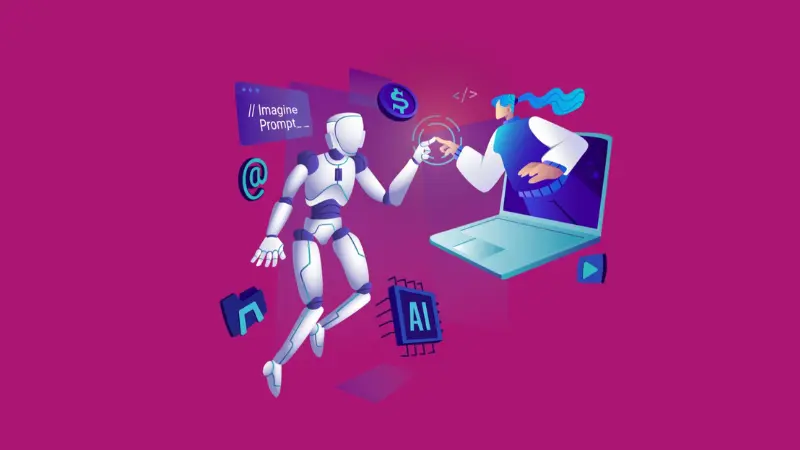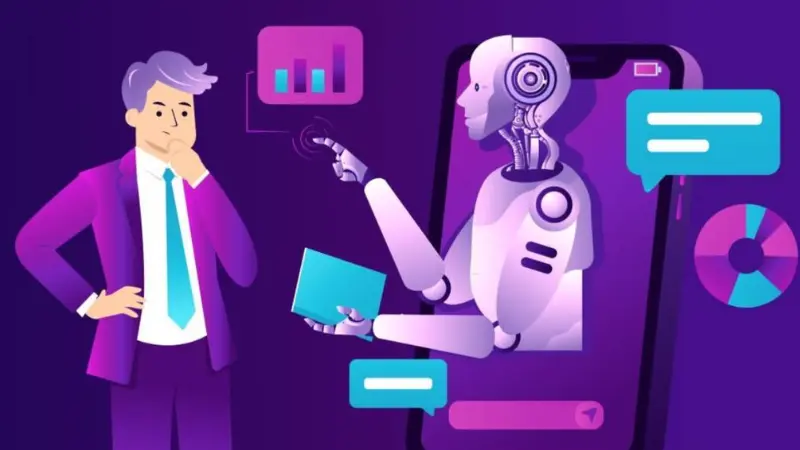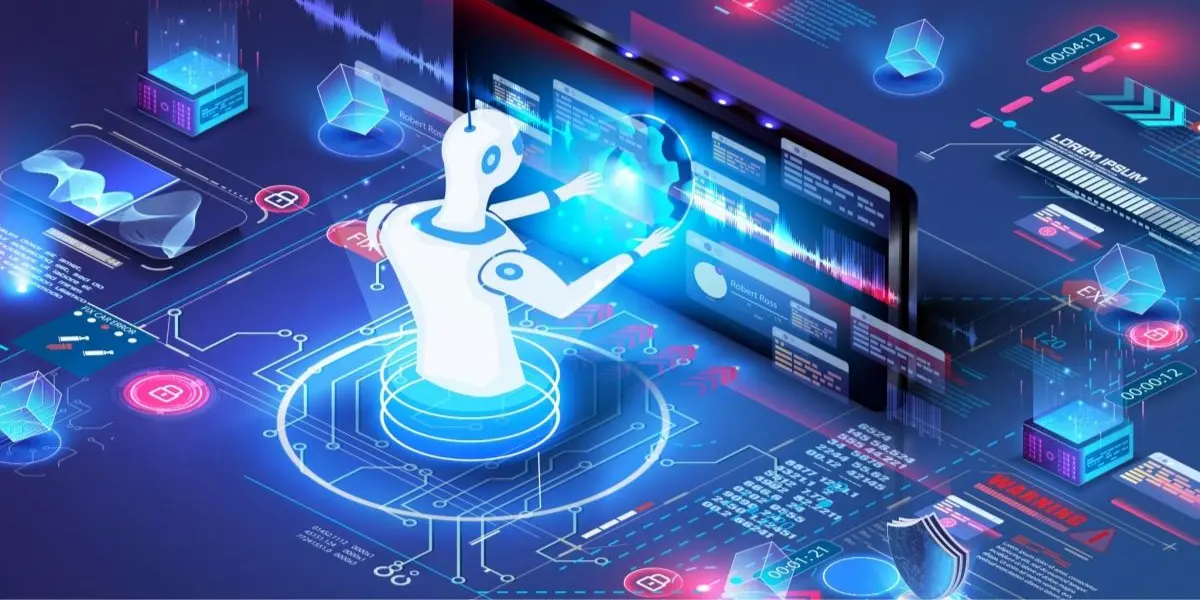In the increasingly digital age, the application of artificial intelligence (AI) in the field of digital marketing has become an important part of the business strategy of many businesses. AI not only helps optimize strategies and plans, but also improves content creation, personalization of messages, data collection and analysis, and customer care. Let’s explore with 102soft how to use AI-powered Advertising.
Why do you need AI in advertising?

AI can do all of this and more. That’s why forward-thinking companies are using AI to:
- Allocating advertising budgets, both across channels and audiences
- Automatically adjust advertising budget to achieve KPIs
- Find new advertising audiences and conversion opportunities
- Build richer audience profiles
- Gain insight into your competitors’ advertising spend, creative, and strategies
- Create ad copy
- Create visual ads
- Hyper-personalize advertising messages and images to individual consumers
- Hyper-personalized ad targeting
- Predict ad performance before launching a campaign
How to use AI-powered Advertising detailed, simple 2024
Make strategies and plans
During the strategy building process, using AI chatbots like ChatGPT not only helps synthesize information quickly and effectively but also supports detailed research to conduct in-depth research. AI chatbots are capable of collecting and synthesizing preliminary information about a topic or product, creating a foundation for research. This tool not only searches for basic information but also provides related data, potential references, and topics of interest. Specifically, AI chatbots can:
- Collect basic data: AI chatbots have the ability to automatically collect basic information about products or topics related to marketing strategies. This includes information about products, markets, competitors, and industry trends.
- Create summaries: AI chatbots can create concise summaries of the most important information, helping users quickly grasp the big picture.
- Identify quality reference sources: AI chatbot has the ability to identify quality reference sources to help with in-depth research. This is especially useful when reviewing documents, articles, or research before starting research.
- Generate research questions: AI chatbots can suggest specific research questions to guide the taker in creating detailed research and data analysis.
Using AI Chatbots to support in-depth research helps optimize the strategy formulation process and ensure that decisions are made based on clear understanding and specific information.
Content production
AI not only supports the rapid development of content ideas, but also diversifies content across many different platforms. Furthermore, AI can produce images and videos at outstanding speeds, allowing marketing messages to be personalized to each customer. Below are specific examples of two popular AI tools used in ideation and content production.
Pictory for video production
Pictory is an excellent example of an AI tool for video production. It uses artificial intelligence to create videos from text or content summaries. By entering text describing a product or project, Pictory can create animated videos, using images, video clips, and transitions automatically. This helps save time and resources for creating unique marketing videos and attracting customers’ attention.
>>>See more: facebook dropship ads
MidJourney for image production
MidJourney is another example of an AI tool for image production. This tool uses artificial intelligence to transform ordinary images into unique works of art. With MidJourney, you can import product images or data charts and let AI create stylish and attractive images. This helps highlight your products and messages in advertising and marketing campaigns.
However, it is always important to pay attention to copyright issues when using images and videos created with AI tools, ensuring you have the right to use these documents and assets legally to avoid infringement. intellectual property rights and legal issues.
Automate programmatic ads
In the field of programmatic advertising, AI plays an important role in simplifying complex processes, helping to optimize advertising campaigns and improve user experience. Here’s an example of how AI simplifies processes related to Meta Ads and Google Ads:
Manage Meta Ads campaigns
AI can automatically optimize advertising campaigns on the Meta Ads platform (formerly Facebook Ads) by predicting the performance of ads and optimizing budgets for specific campaigns. Instead of having to manually monitor and adjust every detail, AI has the ability to automatically direct budgets to the most effective ads based on real-time data.
Manage Google Ads campaigns
In the case of Google Ads, AI can help simplify campaign management by automatically creating and managing ads across multiple platforms, from search to display and video. AI systems are capable of analyzing data and automatically optimizing details such as keywords, titles, and budgets.
Create personalized content
AI is also capable of creating personalized advertising content based on user data. Instead of having to manually create a series of ads for each audience, AI can automatically create content tailored to each user based on interests, previous behavior and personal data.
Using AI to simplify processes in programmatic advertising not only saves time and resources, but also creates more effective advertising campaigns and optimizes the customer experience.

Integrate data processing in CDP – Customer Data Platform
CDP is a powerful tool that aggregates, manages, and analyzes customer data from a variety of online and offline sources. When combined with AI, CDPs can enhance data processing capabilities and create important benefits in the areas of marketing and customer engagement.
Here’s how AI plays a role in CDP:
1. Collect and connect data
AI can automate the process of collecting data from a variety of sources, including websites, mobile applications, CRM systems, offline data, and even data from IoT devices. AI has the ability to automatically identify, normalize, and connect data from these sources, helping to create a comprehensive and consistent customer database within the CDP.
2. Data analysis and prediction
AI can use machine learning and data mining algorithms to analyze customer data. It has the ability to recognize trends, patterns, and hidden data patterns, thereby predicting customer behavior and identifying potential customers. For example, AI can predict when a particular customer is likely to buy your product or service.
3. Personalize and optimize campaigns
Based on information from CDP and AI predictions, you can create more personalized marketing campaigns and interactions. AI can suggest the best content, timing, and approach for each specific customer. This helps optimize campaign performance, increase conversion rates and customer experience.
4. Manage and browse data
AI can automatically review data in the CDP to identify inaccurate information, data errors, or security issues. This ensures that the data in the CDP is always trustworthy and complies with data privacy and security rules.
In short, AI plays a vital role in leveraging CDPs to create more effective marketing and customer engagement strategies. It helps optimize the collection, management, and use of customer data, thereby providing great benefits to businesses by optimizing marketing campaigns and enhancing customer experience.
Customer care
The emergence of customer care AI models has brought great opportunities to interact with customers through natural language. This helps optimize their experience by providing quick information and support that meets their needs.
However, AI also poses a series of challenges. If not managed and controlled carefully, it is possible to send incorrect information or not handle situations tactfully when users have problems with the product. This can lead to a communication crisis, negatively affecting the image and reputation of the business. Therefore, it is necessary to skillfully coordinate between AI and humans to ensure that interactions with customers always take place in a smooth, reliable and personalized way. Cost considerations are also an important factor, and the initial investment in AI deployment and configuration needs to be matched by long-term performance and value.
Conclude:
In the context of an increasingly competitive market and the constant advancement of technology, adopting How to use AI-powered Advertising is not only a trend, but also a decisive factor for businesses to adapt and lead. AI not only helps optimize marketing strategies but also delivers premium and personalized interactive experiences for customers, putting them at the center of every business decision. To not be left behind, businesses need to see AI as an opportunity, a powerful tool, and make appropriate investments to maximize the benefits that AI brings in the field of digital marketing.

